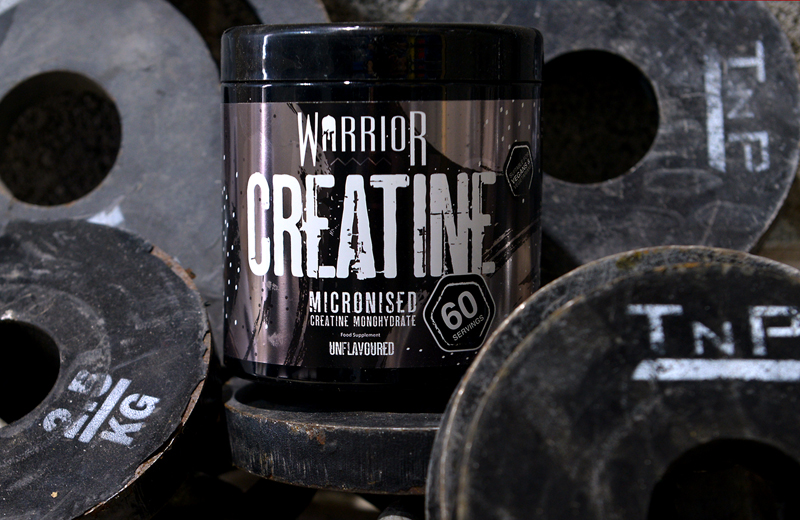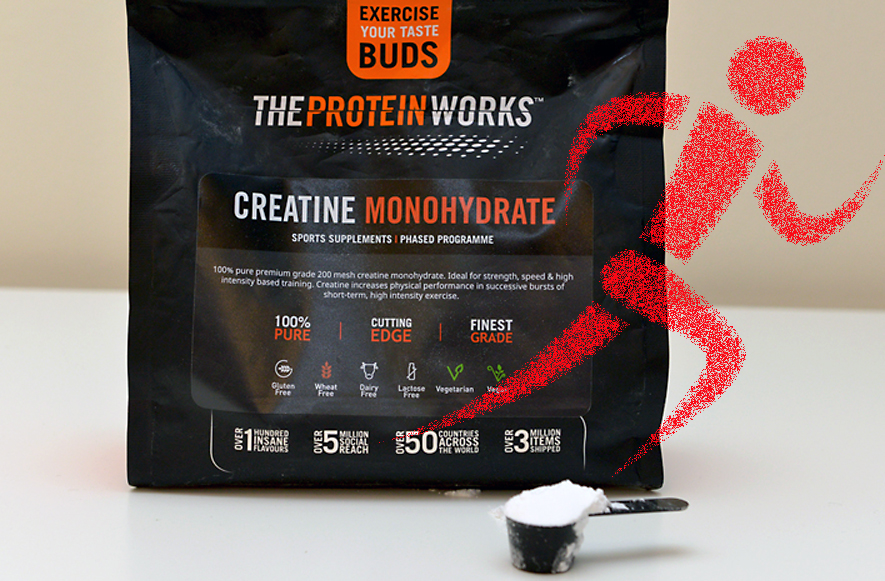Creatine and carbohydrates in the body
Factors modifying creatine accumulation in human skeletal muscle
The ingestion of 5g of creatine (Cr) in solution will raise the plasma Cr concentration from ~40 umol/l to 600 ˆ 800 umol/l within 1 hr and plasma levels then decrease to close to basal over the subsequent 5 hrs (Harris et al. 1992, Green et al. 1996a). Repeating this procedure on four evenly spaced occasions each day for five days can increase the muscle total Cr (TCr) store by up to 40%. This increase is comprised of changes in both free Cr and phosphocreatine (PCr), with the magnitude of increase in the former being the largest (Harris et al. 1992, Greenhaff et al. 1994). The variation between individuals in the magnitude of muscle TCr increase is marked, with the extent of uptake being inversely related to the initial muscle TCr content (Harris et al. 1992, Greenhaff et al. 1994). The reasons for the large variation between subjects in the magnitude of Cr accumulation during supplementation are unknown and require further investigation.
The majority of muscle Cr accumulation occurs within the initial two days of loading and muscle Cr accumulation is saturated following five days of supplementation with 4 x 5g doses (Harris et al. 1992, Hultman et al. 1996). If Cr ingestion is stopped following loading, muscle Cr stores decline gradually and basal levels are reached after about four weeks (Febbraio et al. 1995, Hultman et al. 1996). Ingesting Cr at a rate of 3g per day will increase muscle Cr content but the time-course of change is slower, i.e. it takes 30 days to reach muscle TCr values similar to those observed after five days of 20g/day Cr ingestion (Hultman et al. 1996). Following loading, elevated muscle Cr stores can be maintained for at least one month by ingesting 2g of Cr per day in a single dose (Hultman et al. 1996). This maintains muscle Cr delivery at slightly above the rate of muscle Cr degradation to creatinine. Urinary creatinine output increases by about 20% which parallels the increase in muscle Cr content (Hultman et al. 1996).
Sub-maximal exercise performed prior to Cr ingestion can augment muscle Cr accumulation by about 10%, but again the variation in response is marked when comparing individuals (Harris et al. 1992).
Creatine plus carbohydrates
Muscle Cr accumulation can be substantially augmented by ingesting Cr in combination with large quantities of simple carbohydrates (Green et al. 1996b). This reduces the variation in responses between individuals and also outweighs any stimulatory effect exercise has on muscle Cr accumulation (Green et al. 1996a, 1996b). Muscle Cr accumulation is thought to be augmented as a result of insulin stimulating muscle sodium pump activity, and thereby sodium-dependent Cr transport. Recent evidence has demonstrated that it will require in the region of 100g of simple carbohydrates to be ingested to achieve an insulin-mediated stimulation of muscle Cr transport (Steenge et al. 1998). In practical terms, this will be difficult for individuals to achieve as the ingestion of such a large quantity of carbohydrate is at the limit of palatability. There are no data currently available to demonstrate the time-course of muscle Cr accumulation when Cr is ingested in the presence of large quantities of carbohydrate, i.e. how quickly is muscle Cr uptake saturated? This may be of significant practical importance.
A muscle Cr transport protein has recently been identified and it has been shown that its expression is down-regulated in rat skeletal muscle following six months of supra-physiological amounts of Cr supplementation (Guerrero-Ontiveros and Wallimann, 1998). Whether a similar response occurs in humans is unknown, as is the consequences of chronic Cr ingestion on the muscle Cr transport mechanism, i.e., why does the muscle become desensitised to Cr as a result of chronic ingestion? (For more on creatine and other ergogenics, see the middle pages of this issue).
Paul Greenhaff, School of Biomedical Sciences, University Medical School, Nottingham
References
Febbraio, M.A., Flanagan, T.R., Snow, R.J., Zhao, S. and Carey, M.F. (1995).
"Effect of creatine supplementation on intramuscular Tcr, metabolism and performance during intermittent, supramaximal exercise in humans." Acta Physiologica Scandinavica 155, 387-395.
Green, A.L., Simpson, E.J., Littlewood, J.J., Macdonald, I.A. and Greenhaff, P.L. (1996a).
"Carbohydrate ingestion augments creatine retention during creatine feeding in man." Acta Physiologica Scandinavica 158, 195-202.
Green, A.L., Hultman, E., Macdonald, I.A., Sewell, D.A. and Greenhaff, P.L. (1996b).
"Carbohydrate ingestion augments skeletal muscle creatine accumulation during creatine supplementation in man." American Journal of Physiology 271, E812-E826.
Greenhaff, P.L., Bodin, K., Soderlund, K. and Hultman, E. (1994).
"The effect of oral creatine supplementation on skeletal muscle phosphocreatine resynthesis." American Journal of Physiology 266, E725-E730.
Guerrero-Ontiveros, M.L. and Wallimann, T. (1998).
"Effects of creatine supplementation in vivi: down-regulation of the expression of creatine transporter isoforms in rat skeletal muscle."
Molecular and Cellular Biochemistry 184, 427-437.
Harris, R.C., Soderlund, K., and Hultman, E. (1992).
"Elevation of creatine in resting and exercised muscle of normal subjects by creatine supplementation." Clinical Science 83, 367-374.
Hultman, E., Soderlund, K., Timmons, J., Cederblad, G., and Greenhaff, P.L. (1996).
"Muscle creatine loading in man." Journal of Applied Physiology 81, 232-237.
Steenge, G.R., Lambourne, J., Casey, A., Macdonald, I.A. & Greenhaff, P.L.
"The stimulatory effect of insulin on creatine accumulation in human skeletal muscle." Am J Physiol (1998), 275, E974-E979.
You need to be logged in to continue reading.
Please register for limited access or take a 30-day risk-free trial of Sports Performance Bulletin to experience the full benefits of a subscription. TAKE A RISK-FREE TRIAL
TAKE A RISK-FREE TRIAL
Newsletter Sign Up
Testimonials
Dr. Alexandra Fandetti-Robin, Back & Body Chiropractic
Elspeth Cowell MSCh DpodM SRCh HCPC reg
William Hunter, Nuffield Health
Further reading
Newsletter Sign Up
Coaches Testimonials
Dr. Alexandra Fandetti-Robin, Back & Body Chiropractic
Elspeth Cowell MSCh DpodM SRCh HCPC reg
William Hunter, Nuffield Health
Keep up with latest sports science research and apply it to maximize performance
Today you have the chance to join a group of athletes, and sports coaches/trainers who all have something special in common...
They use the latest research to improve performance for themselves and their clients - both athletes and sports teams - with help from global specialists in the fields of sports science, sports medicine and sports psychology.
They do this by reading Sports Performance Bulletin, an easy-to-digest but serious-minded journal dedicated to high performance sports. SPB offers a wealth of information and insight into the latest research, in an easily-accessible and understood format, along with a wealth of practical recommendations.
*includes 3 coaching manuals
Get Inspired
All the latest techniques and approaches
Sports Performance Bulletin helps dedicated endurance athletes improve their performance. Sense-checking the latest sports science research, and sourcing evidence and case studies to support findings, Sports Performance Bulletin turns proven insights into easily digestible practical advice. Supporting athletes, coaches and professionals who wish to ensure their guidance and programmes are kept right up to date and based on credible science.









